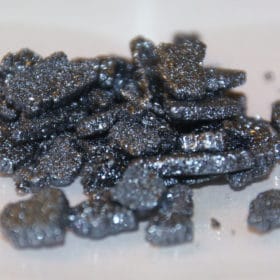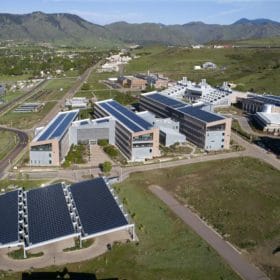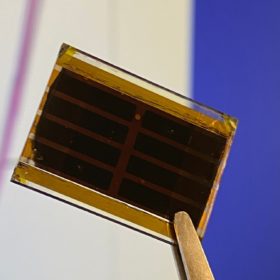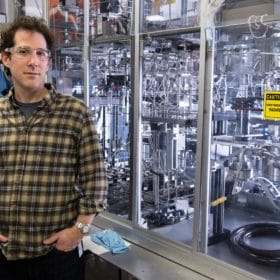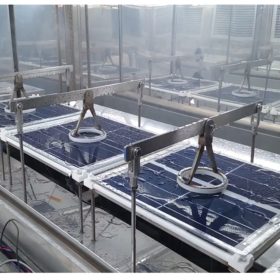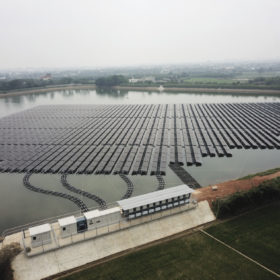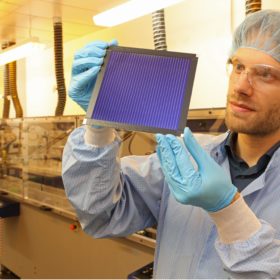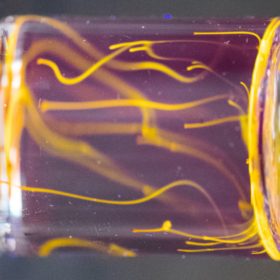Inverted blade-coated perovskite cell with 23.2% efficiency
A US research team has improved the efficiency of a blade-coated perovskite cell with a p-i-n structure by reducing iodine-induced charge traps in the films. They used the cells to fabricate a mini module with an efficiency of 18.2%.
Raising the temperature on module standards
Scientists in the U.S. laid out the rationale behind new PV module testing specifications published last year, which aim to better take into account the role of temperature in various types of performance loss. They suggest a new ‘98th percentile’ approach to measuring module operating temperatures, which would offer system designers a better understanding of the module’s performance in a particular ‘micro-environment’.
Perovskite solar cell with 21% efficiency includes tech to prevent lead leaks
U.K. scientists have used mesoporous scaffolds based on hydroxyapatite nanoparticles – blended with titanium oxide nanoparticles – to create a mechanism that prevents lead leakage in perovskite solar cells. They claim the method captures lead ions in leaks, while also increasing cell efficiency.
New approach to III-V tandems sets 32.9% efficiency record
A collaboration between the U.S. National Renewable Energy Laboratory and Australia’s University of New South Wales has yielded a new efficiency record of 32.9% for a tandem cell device utilizing III-V materials. Key to the achievement was a new technique enabling the researchers to take advantage of “quantum wells” in the material that serve to trap charges and enable tuning of the cell bandgap to absorb more of the light spectrum.
Perovskite-based solar window tech from NREL
NREL’s new solar window darkens in the heat of the sun, producing electricity via embedded perovskite film. The tech is based on formamidinium-based metal halide perovskite, an inherently thermochromic material exhibiting significant optical changes.
A stress test for all seasons
Scientists led by the U.S. National Renewable Energy Laboratory (NREL) have developed a new stress testing protocol for PV modules, one designed to simultaneously expose modules to multiple stresses, as they likely would be in the field. Putting modules through this test, the researchers have already been able to reveal new information regarding backsheet degradation, and they promise new insights into other degradation mechanisms both known and unknown as well.
Floating PV paired with hydroelectric dams to cover peak load
A research team from Pakistan has modeled the addition of a floating PV array to an existing dam project to increase the availability of power during peak load hours.
Nextracker inks 1 GW supply deal and claims up to 12% bifacial yield gain
The 1 GW fifth phase of the Mohammed bin Rashid Al Maktoum Solar Park in Dubai will feature NX Horizon trackers with the deal announced after the manufacturer published new bifacial yield gain claims.
New world record for large-area organic PV module efficiency
Scientists in Germany have achieved 12.6% efficiency with a 26 sq cm organic panel and 11.7% for a 204 sq cm device. The feats were achieved with a new module layout and a slower, high-resolution, short-pulse laser structuring process.
Designer molecules enable ‘two for one’ efficiency boost
Scientists in the U.S. have come a step closer to taking advantage of singlet fission – a phenomenon seen in certain solar cell materials that promises to greatly increase energy yield. By designing and testing various molecules, the group was able to better understand the fundamental processes behind the mechanism and optimize materials to better take advantage of it.
